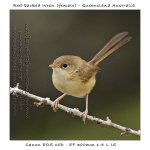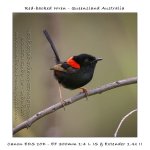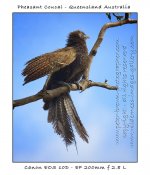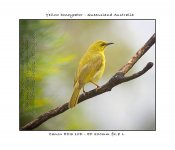Hi Tannin
It sounds like you had a great trip around this wonderful country and I'm sure your images are not as bad as you believe them to be. We are all our own worse critics and photographers seem to be worse than others.
I agree with many of the above posts and would just like to add a couple of things, some ideas that you may like to implement to help improve your work:
1/ Join a group of like-minded people (or a mentor) who you can go out with on regular photo shoots and afterwards help each other improve technique by discussing your photos and how you shot them. This approach also keeps up your enthusiasm.
2/ Study the photographers which you like and try and find out how the shot was achieved. By trying to get similar results you will learn the techniques they may have used and will improve your work.
3/ Buy a book on technique by a well-recognised professional nature photographer such as John Shaw, Laurie Campbell, etc. Learn correct lighting, composition, depth-of-field and exposure techniques and then practise, practise, practise.
4/ Enrol in a photography workshop and/or photo tour. This will give you hands on experience, expert tuition and often the chance to use professional equipment such as super telephoto lenses and high end cameras that would normally not be available to you. You will also learn "insider" tips, how to overcome "real-life", in-the-field problems and other professional techniques from your tutor/leader and see how other photographers go about getting their images..
Some people have mentioned equipment as playing a big part in getting good images and having the right equipment certainly helps but good technique is much more important.
Professional photographers have years of experience, the time to do the job and are able to justify buying expensive top-of-the-range gear but above all else they also have excellent technique and ability.
If you don't have or can't afford the pro gear necessary to get good closeups from afar, then learn how to use your gear to it's best advantage, learn stalking techniques, how to use hides or how to get the birds to come to you.
Jay's story of his son moving in close to the feeder to get some photos is an excellent example of what I mean (I must ask Jay's permission to use this story during my own photoworkshops) - we are told so often that the only way to get good images is with super telephotos that we forget to use our feet and our cunning.
On my own property on the Atherton Tablelands, I regularly get so close to the birds (or they to me) that I am using only medium or short telephotos to be able to get the entire bird in the frame. Even some of the smallest, flighty, birds such as the Red-backed Fairy Wren, Pardolotes and the small Honeyeaters can be easily photographed with lenses of 300mm or less.
I will attach a couple of examples to show you what I mean. Many of today's P&S digitals have a zoom which covers or is close to this.
If you do want to buy longer telephotos then now is a good time. With the wide acceptence of digital photography and auto-focus cameras and lenses, there are now some excellent bargains of older manual focus SLR cameras & telephoto SLR lenses. Yes, it's true, in the good ol' days we actually did manaully focus our cameras.

Even if you buy or already have a digital SLR, the older manual telephotos can still be used with it and these can be purchased for a fraction of their new costs as people sell them off in favour of P&S digitals.
Don't forget that Michael Morcombe shot those images for his book well before digital & auto everything!

Well, I think you get the idea, so I won't waffle on any longer but try some of those suggestions and I'll guarantee that your images will improve.
Good luck with your future photography.
Kind regards
Peter
www.peter-brown-photographer.com
www.wilderness-images-gallery.com






